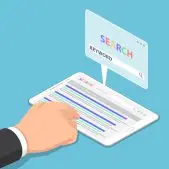The mobile app landscape is more competitive than ever, offering countless ways for users to access information, connect, and entertain themselves. To thrive in this saturated environment, exceptional UX design is essential, especially when leveraging a freemium model.
The freemium approach, offering a free product with optional premium upgrades, can drive significant growth and revenue. But success depends on how effectively UX design moves users from casual interaction to loyal engagement and eventually paid conversion.
This article explores four proven UX strategies that help freemium apps not only attract users, but also foster deeper loyalty, maximize upgrades, and sustain long-term success.

1. Create Positive Engagement Through Ethical Gamification
Gamification can powerfully motivate users to engage more deeply, but only when done thoughtfully. UX design should incorporate progress systems, achievements, or daily rewards that enhance the user experience without feeling manipulative.
Encourage positive reinforcement through meaningful milestones and gentle nudges toward premium features. Focus on creating delight and a sense of achievement, allowing users to feel a natural progression rather than being pushed toward upgrades.
When gamification is embedded authentically into the app experience, users are more likely to invest emotionally and financially in your product.
2. Build Community and Foster Social Connection
Today’s users crave connection and shared experiences. Integrating community-driven features such as user groups, messaging, or collaborative challenges can deepen engagement and create loyalty.
Rather than relying solely on external social media links, prioritize in-app community experiences that let users share progress, offer tips, and celebrate wins. Social integrations can also extend user lifespan, offering new pathways to engagement and providing valuable organic feedback for continuous UX improvement.
Additionally, offering users incentives to connect their profiles or invite friends can enhance retention and expand your reach, while helping you better understand your audience through ethical, consent-based data insights.
3. Highlight Conversion Opportunities at the Right Moments
Conversion prompts should feel like helpful suggestions not interruptions. Strategically present premium features when users are most likely to see the value, such as after achieving a goal, reaching a usage milestone, or unlocking a new capability.
Allow users to experience premium features through limited-time trials or sneak peeks. Giving them a taste of enhanced functionality builds understanding and increases the likelihood of upgrade decisions.
Smart UX strategy ensures that every upsell feels timely, relevant, and user-driven — creating a sense of opportunity rather than pressure.
4. Personalize Experiences to Retain and Reward Long-Term Users
In a freemium model, retention is just as critical as acquisition. UX design must account for the evolving needs of both new and loyal users. Over time, early incentives or features may lose their novelty, risking disengagement.
Personalization is key:
- Introduce new premium features or exclusive content tailored to long-term users.
- Offer evolving onboarding paths for newcomers to create a fresh sense of discovery.
- Recognize milestones and loyalty with customized rewards or early access to new features.
By making each user feel seen and valued, UX design becomes a dynamic engine that adapts over time building a more resilient and profitable user base
Conclusion
The freemium model holds immense potential, but it demands a carefully crafted, user-first experience to succeed. Thoughtful UX design focused on engagement, community, timing, and personalization, transforms freemium users into passionate advocates and paying customers.
At UpTop, we specialize in creating digital experiences that drive meaningful engagement and sustainable growth. From in-depth user research to UX strategy, product design, and development, our team is passionate about helping you achieve lasting success. Let’s build something extraordinary together.


